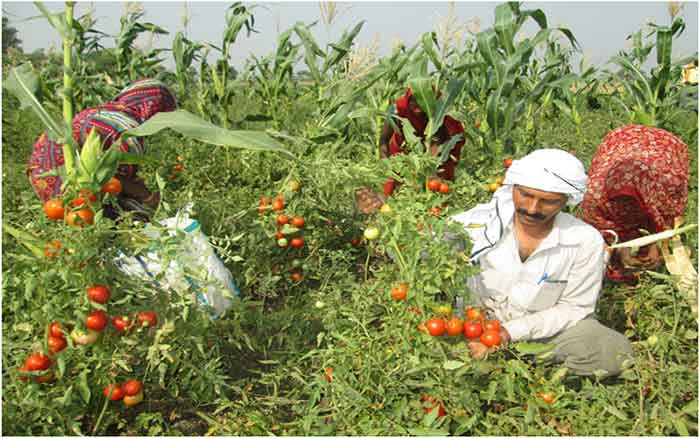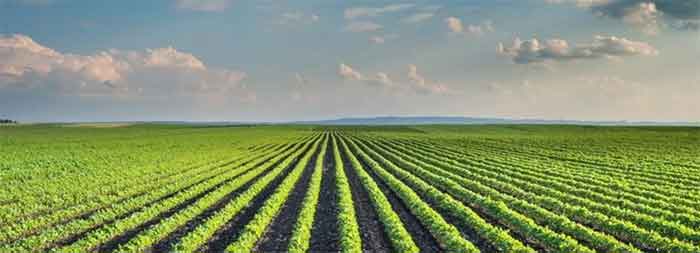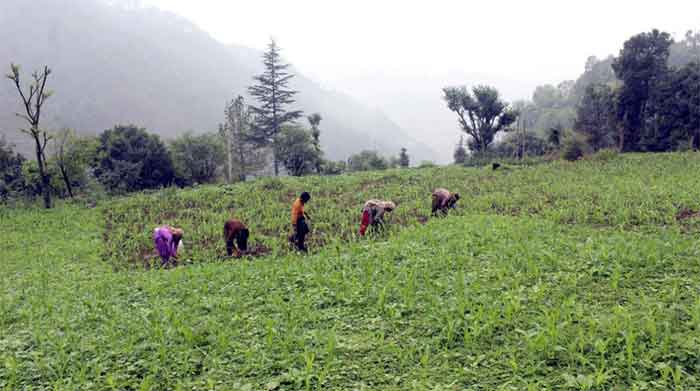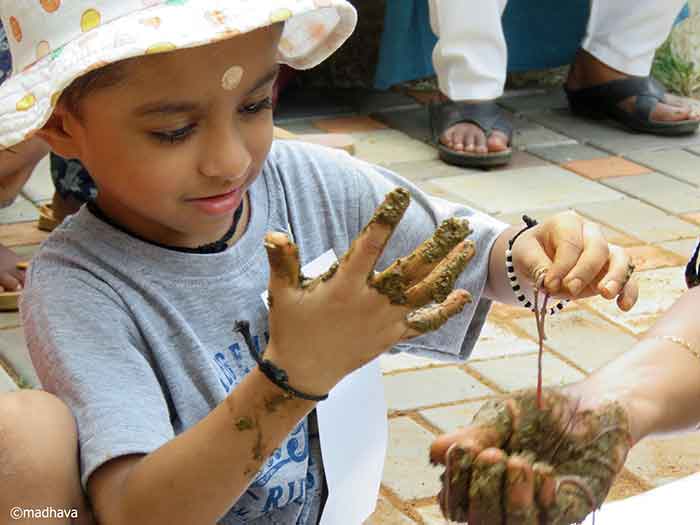by Debal Deb/ A K Shiburaj
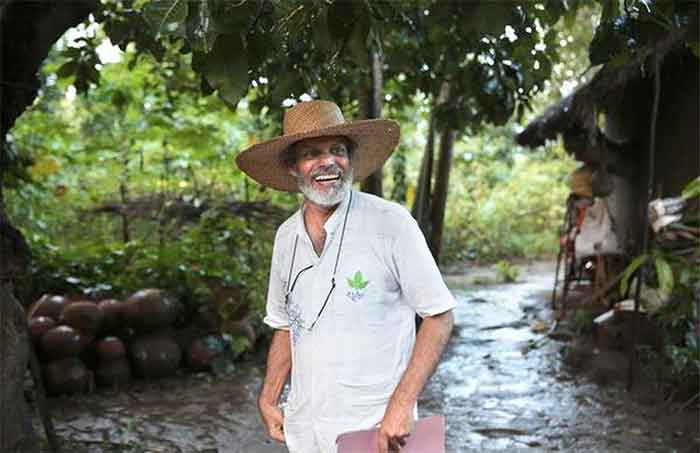
Dr. Debal Deb is an ecologist working with traditional farmers in eastern India to conserve indigenous seed diversity. Debal Deb, an alumnus of the Indian Institute of Science and a former Fulbright Scholar at the University of California, Berkeley, US, left his job at the World Wildlife Fund in the mid-1990s after failing to convince his colleagues of the importance of documenting Bengal’s endangered rice crops. He then founded Basudha in Odisha, a 1.7-acre farm that promotes ecological architecture and research into traditional farming practices. His another notable work is the first Non-Government Rice Seed Bank called Vrihi started for farmers. Through this more than 1400 rice seeds are saved here. He also promotes non-commercial exchange of indigenous rice crops and fostering a culture of indigenous seed cultivation. Because of this, he had to face various threats from big companies like Monsanto. About agro-ecology and the importance of indigenous seed conservation, Dr. Debal Deb speaks in Part 1 of this interview.
What is Agro Ecology and how is it different from other farming practices? Often people use the terms agro ecology, organic farming and natural farming at the same time. How is agroecology different from other methods?
Agroecology is basically the application of the science of ecology to agriculture. I did not use the term ‘ecology’ in the sense used by mass movements. It is the science that deals with how organisms live in an ecosystem and how they interact with each other. An example is the food chain. Its function, the laws of life, and stability all come as a part of it. It’s based on how you measure sustainability, the resilience of ecosystems, etc. Basically it focuses on biological diversity and the relationships that exist between them. Organic farming is the method of farming without the use of chemical fertilizers and pesticides. But this method of farming can in principle use organic fertilizers and hybrid crop varieties like Bt cotton simultaneously. Also, the term ‘Natural farming’ is an oxymoron. No farming method can claim to be natural.
Everything from seeds to agricultural tools is man-made. Agriculture is human interaction with nature. Agro ecology works with these realities in mind. But agroecology primarily considers crops as well as non-crops as well as diversity of animals and microbes.
Moreover, agro-ecology is about increasing this diversity. Genetic diversity is also important. A high diversity should be maintained in each crop like rice, wheat, small grains, vegetables etc. Thirdly, architectural diversity should also be maintained in the farm. A farm should ensure a variety of small and large trees, climbers, shrubs and herbs. Therefore, the weeding and herbicide application are contrary to principles of agroecology. But there will be a way to control the weeds. That means weed control instead of weed eradication. It is important because all those plants called weeds and insects and other organisms have different roles to play in the ecosystem. In that sense, agroecology seeks to make a system more complex. Thus, the ability of the agroecosystem to return to their original state of equilibrium (resilience) can be enhanced. And Agroecology is not only a scientific method but also a movement. It is also a philosophy.
Agroecology is not a stand-alone farming method, meaning it requires the holistic support of various factors. What kind of economy is necessary for the survival of agro-ecology?
Agro ecology itself is also an economy of self-reliance. That’s why I said it’s a community-based activity. It does not need the help of another economy. Agro-ecology does not require imported labour, machinery, seeds and fertilizers from outside, even cow dung form outside. Bank loan or microcredit from external agencies are inimical to agroecology. It espouses freedom from dependence on external agencies. However, Agroecology cannot work without the participation of a community. A practical form of this is seed banks where farmers share seeds. The use of agricultural implements and sharing of knowledge is at the community level. It can be remembered that reciprocal agricultural labour was also common in villages some sixty years ago.
Agroecology does not exist only as an on-farm practice. Profit making is not the primary concern of agro ecology. The first consideration is the sustainable existence of a society and the existence of that society independent of external forces. There is no dependence on micro-credit from voluntary organizations, government assistance, seed distribution by companies, their fertilizers and pesticides. This is why community level action is needed. This model was tried and is successful in Cuba. It also spread to other countries like Mexico. In Cuba it was also successful even in the cities. Good production was also possible there. Agro ecology goes beyond using organic farming practices. Locally developed irrigation systems existed here for centuries. Center for Science and Environment (CSE) has published a good book on this. It can be seen that the tools and systems that were made in the respective communities were used. But we have eliminated and forgotten all these systems. Agro ecology is not something that has just been invented. I am saying that it has existed in the world for centuries.
There has been a change in land use as part of human interventions over the years. It is not the old landscape that exists now. When water is not available near a small farmer’s land, does he not have to rely on systems like pump sets to bring water to his farm from afar? Or is it not necessary to say that agro-ecology is not possible in a small farm?
Agro-ecology can be done successfully even on a small farm land. We have been farming in Basudha, Orissa for over twenty five years without any external inputs, pump set, fossil fuel, or other external resources. We use locally developed and manufactured farm implements. Agro ecology can be done very successfully even on a small farm. A pump set or a tractor is not manufactured, or even repaired within a village community, besides that it needs fossil fuel from outside to run it. When that happens, the role of the community disappears.
And small scale agriculture can play the biggest role in food security. Understanding its importance, UN FAO launched the International Year of Family Farming a few years ago. International Assessment of Agricultural Science & Technology for Development (IAASTD) has published a detailed report in this regard. Why do you need irrigation?
In your dryland farm you can grow crops that require less water. Why insist on cultivating paddy, sugarcane etc. which need more water everywhere? There are many types of vegetables, Millets, Maze etc. that need less water. This is how humans farmed for centuries before modern farming methods came along. Apart from this, irrigation is traditionally not done on a large scale and even the ground water was not exploited as we do now. Moreover, they used locally made tools. Agro-ecology work is not against tools and mechanization. What is important is that the community should have control over its production and maintenance.
Isn’t what you’re talking about closely related to Fukuoka’s cultivation method?
Yes, it has a close relationship with Fukuoka’s philosophy. But Fukuoka’s method is not equally applicable everywhere. In dry tropical areas, no-till farming can be difficult. Or a good amount of mulch will have to be applied and it’s not that easy. But it is consistent with Fukuoka’s method of not using external inputs. Agro ecology is also an economy based on community-led interdependence.
Is this not related to deep ecology as well?
Not exactly. Deep ecology is one that keeps even your life-threatening germs at bay. When that happens, even if you get malaria, you should not take any kind of medicine. Because the germs that cause malaria are also considered to have the right to live, according to Deep Ecology. Agro-ecology does not eradicate pests but controls them.
The monoculture system even if it is organic farming is not a sustainable farming method?
Monoculture does not follow the basic principles of ecology. As an ecosystem becomes more diverse and complex, the ability of plants to adapt to adverse weather conditions increases. Otherwise, the system can collapse at any time. One pest attack is enough to wipe out the entire crop. In organic farming, only emphasis is placed on farming using organic materials. Many farmers who are doing it under many names like natural farming, zero budget farming, organic farming etc. are using vermi compost and microbes imported from the Philippines and even from Africa. Such imported products are used without knowledge of the micro-organisms and bio-diversity of the respective region. Thus vermicompost is a huge industry today.
Rice is usually grown as a mono-crop. When it comes to agro-ecology, should rice be grown in combination with other crops?
Yes . Rice is widely cultivated as a single crop. Not only that, farmers eradicate a lot of biodiversity in the name of weeds. Therefore, only rice plants are usually found in paddy fields. This is against the principles of agro-ecology. Non-crops are also important. When you come to Basudha, you can see various types of pulses, vegetables, small grains, maize etc. being cultivated along with paddy. Moreover, many of the things that we pull out in the name of weeds actually include different types of wild food plants as well.
What are the main points to be followed while shifting from farming methods using chemical fertilizers and pesticides to agro-ecology?
The first thing you need is the mindset and willingness to do it. A trust in the method of agrarian practice that has been evolved by humans for centuries is very important. The Green Revolution enforced and popularised the use of inputs and monoculture. We must not forget the fact that for nearly ten thousand years, the food needs of a people were met in traditional ways, without the modern inputs.
What is needed later is to acquire that knowledge with the conviction that this is not an utopian idea. The primary thing to know is that there is no external intervention or inputs required. It is also important to know that biodiversity is the basis of survival of every species. A society can walk towards agro-ecology if self-sufficiency is the main goal. Organic farming without the use of chemical fertilizers is just the beginning. We can get rid of the problems we are facing today only if we move towards agro-ecology without stopping at organic farming.
Can you explain the need to maintain crop purity of traditional seeds and how it can be done?
It should be understood that conservation and preservation of a seed are different. You can store hundreds of seeds in a museum. Conservation takes place when the seeds are kept alive and can reproduce. Every year more than 1400 rice seeds are cultivated and conserved in our farm. The natural evolution of each variety takes place in nature as it is cultivated each year.
It is able to survive and adapt to the ever-changing environment of pests, microbes and climate. Only by cultivating every year will this evolutionary process take place, so crop immunity will increase. If this is not handled carefully, many benefits will be lost over time. That is why odorless basmati rice is available in the market. Similarly, the specific node colour, or the awns (sharp spines on the grains of some rice varieties) of a variety can be seen to disappear over time. Such changes caused by genetic mixing are easily visible. But the loss of a species’ ability to resist floods, droughts and diseases, and to survive adverse conditions and return to its original nature, are not visible, though very common. That is why it is necessary to maintain genetic purity. It is important not only in plants but also in animals.
It is generally believed that the cross pollination rate of rice crops is only two percent. This is not true. Rice crops have a cross pollination potential of up to 82%, as my recent published work has demonstrated. It can sometimes be up to 100%. Apart from cross pollination, genetic impurity can result from physical mixing of different varieties during sowing and harvesting. Of the five varieties I collected from Tamil Nadu in the name ‘Navara’, only one possessed the original qualities of ‘Navara’.
A variety cannot be judged by the colour or grain characteristics alone. We determine the purity of a rice variety by checking about fifty characteristics, in addition to grain colour and size. Ancient farmers were adept at maintaining the genetic purity of seeds. I learned all these lessons from them. Today, the new generation who depend on seed companies for seeds have lost this knowledge. This is a very important issue.
Can one farmer maintain the genetic purity of one variety when two farmers cultivate two different varieties in the same or in the neighbouring field?
Seed protection is possible within the same field itself. Cross pollination can be avoided if different cultivars have different flowering timings. A gap of at least seven days is sufficient. If the intervals are less than seven days, cross pollination can be prevented by creating a barrier between the two crops so that pollens do not reach on a neighbouring variety. There are many other methods too. Seed conservation is very rigorous task and requires a lot of effort and time. Anyone can download the paper I published about my method of maintaining genetic purity from internet.
Does agro- ecology strictly mean that cross-pollination should not result in a new variety?
Not so. I myself have developed 8 new varieties of rice seeds. It has been distributed freely to the farmers. I have not registered anything to claim it as well. Just make sure that such seeds are adaptive to the local environment. For that, the environment in which it grows must have biodiversity. That is, there must be conditions that foster the ability of the agroecosystem to revert to their original complex state after a small disturbance, like a storm or a pest attack. It needs native biodiversity. Then system’s resilience will also increase.
Do you feel that due to the excessive importance given to rice cultivation, the cultivation of millets maze, different types of cereals, sorghum, tubers, leafy vegetables etc. is not getting due importance?
Of course it happens so and agro-ecology can solve this. Along with that crop species diversity, the genetic diversity of each crop species is also equally important. Only this diversity will ensure our food security. Today we are eating the same variety of tomatoes, vegetables and grains. All traditional varieties were in fact developed consciously by farmers over millennnia. All the crops and all domesticated animals we see today were not created naturally nor evolved by natural selection. This is why I said earlier that agriculture developed through human intervention cannot be called natural. It is this diversity that provides many of the nutrients we need. As the world moved to monocultures, this diversity was neglected and now our health is at risk.
Traditional knowledge is often seen as unscientific and ignored by mainstream society. Isn’t the attitude that people accept the knowledge gained over centuries only based on the results of experimental observations in the laboratory, which will eliminate important knowledge system and instead bring the monopolization of knowledge?
Of course this is true and a great menace. Children’s text books do not tell us that we have such a wide diversity of crops or that they were created by ancient farmers. A great storehouse of knowledge is concealed in the name of science. A common perception is that science is the production of knowledge that takes place only in laboratories. And we teach the children that knowledge is handled only by those who are there in the laboratory while other humans, including the farmers, have nothing to do with the production or transfer of knowledge.
They even forget that science is only a process of acquiring knowledge. But in the West, there is a slightly different attitude. It is seen that common human knowledge is also considered there.
Compared to our country, I feel that the attitude of accepting something as knowledge only if it is proven in the lab is not so strong there. I have seen journals that publish the knowledge of farmers there. The Indian scientific community usually does not encourage such things. Therefore, the society studies that the Bt seeds developed in the lab are scientific and the traditional seeds developed and maintained by the farmers are unscientific.
For the same reason, our wealth of traditional crop diversity is neglected. A multitude of traditional rice and millet varieties, for example, are very rich in iron, zinc and vitamin B complex – enormously richer than any modern high yielding variety, and I have published the amazing nutritional qualities of more than 500 rice varieties in different scientific journals.
Our policy makers and urban consumers neglect this wealth.
A.K Shiburaj is a journalist associated with Keraleeyam
Originally published in Keraleeyammasika

